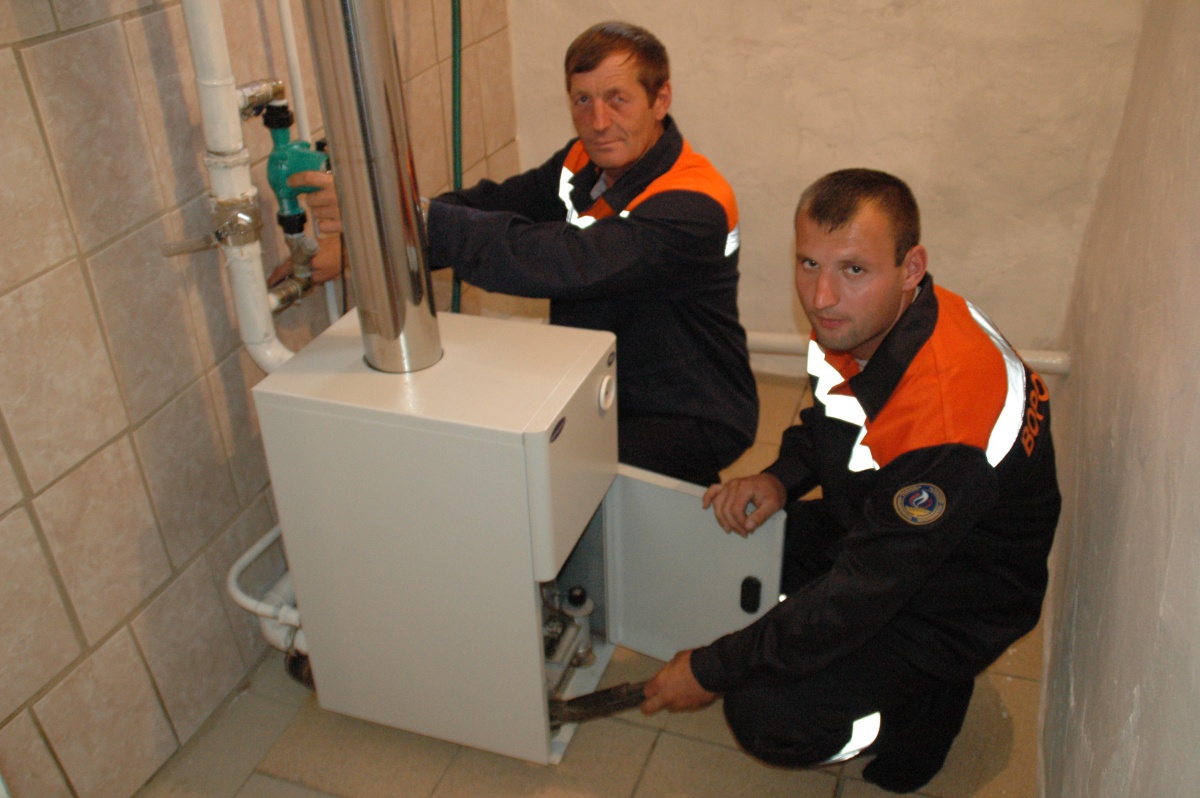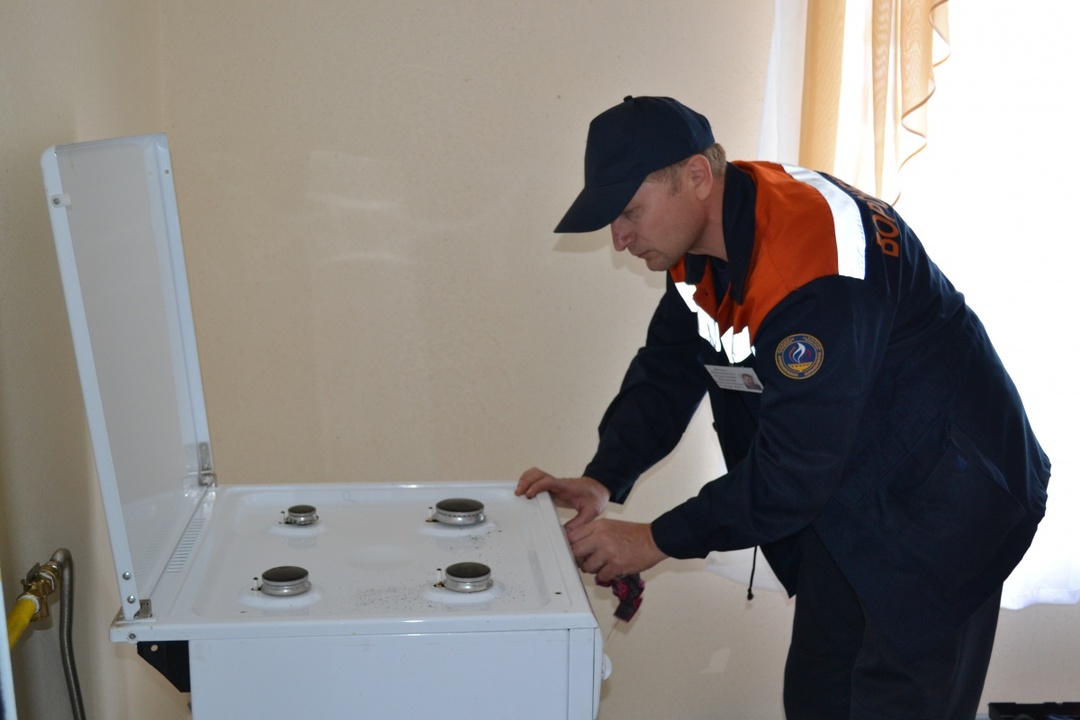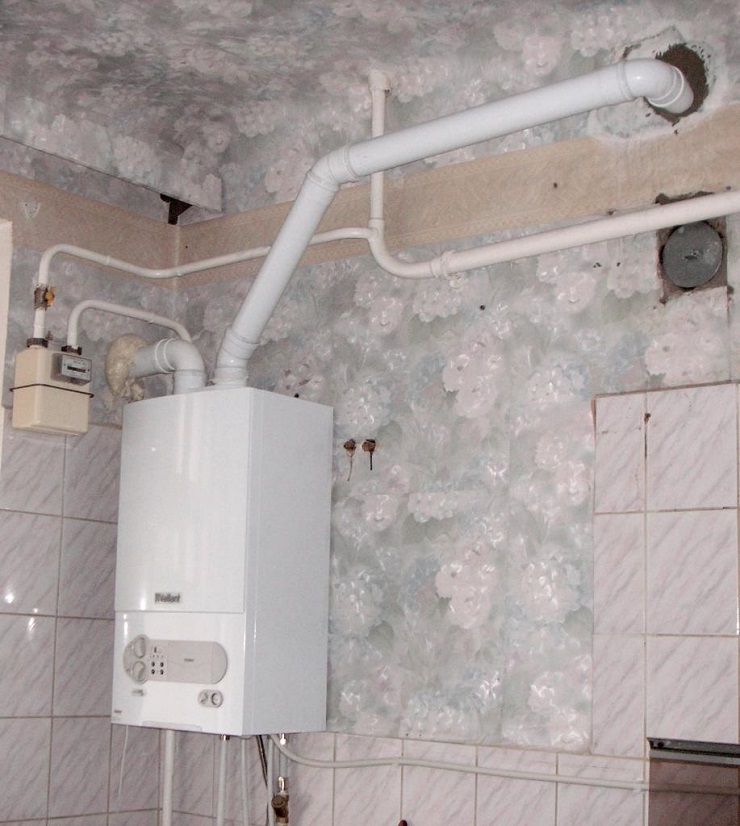Central heating does not always suit apartment owners and many dream of autonomous heating. But not everyone knows that installing a gas boiler in an apartment in an apartment building is not just a dream, but a very real opportunity.
Is it hard to believe or not at all? Then we will now tell you everything in detail and explain how to carry out independent heating in your apartment, what for this, documents are needed on how to prepare the premises and in what cases do gasification of the apartment after all it is forbidden.
The content of the article:
- Regulations, laws and regulations
-
Number of storeys and other requirements for gasification
- Premises for gas-using equipment
- Standards for distances and structures
- Exhaust ducts and window structures
- Nuances of gasification of an apartment building
- Gas for new buildings
-
The procedure for registration of gasification of an apartment
- Prohibitions for owners of a gasified apartment
- Obligations of the owner of a gasified apartment
- Conclusions and useful video on the topic
Regulations, laws and regulations
Let's immediately consider what decrees at the legislative level regulate such connections. They will help you to implement your plans without problems with local authorities, without danger to health and life, and moreover, with a minimum waste of time and money.
You will need for review:
- SP 60.13330.2016 - "Heating, ventilation and air conditioning".
- SP 62.13330.2011 /SNiP 42-01-2002 - here it is described in detail about the gas distribution systems.
- SP 41-108-2004 - a document on apartment heat supply using gasification.
- SP 402.1325800.2018 - "Rules for the design of gas consumption systems."
And of course, general studies of the documentation of your apartment building are necessary.
Number of storeys and other requirements for gasification
So, you have been patient and you have the financial opportunity to equip autonomous heating in your apartment.
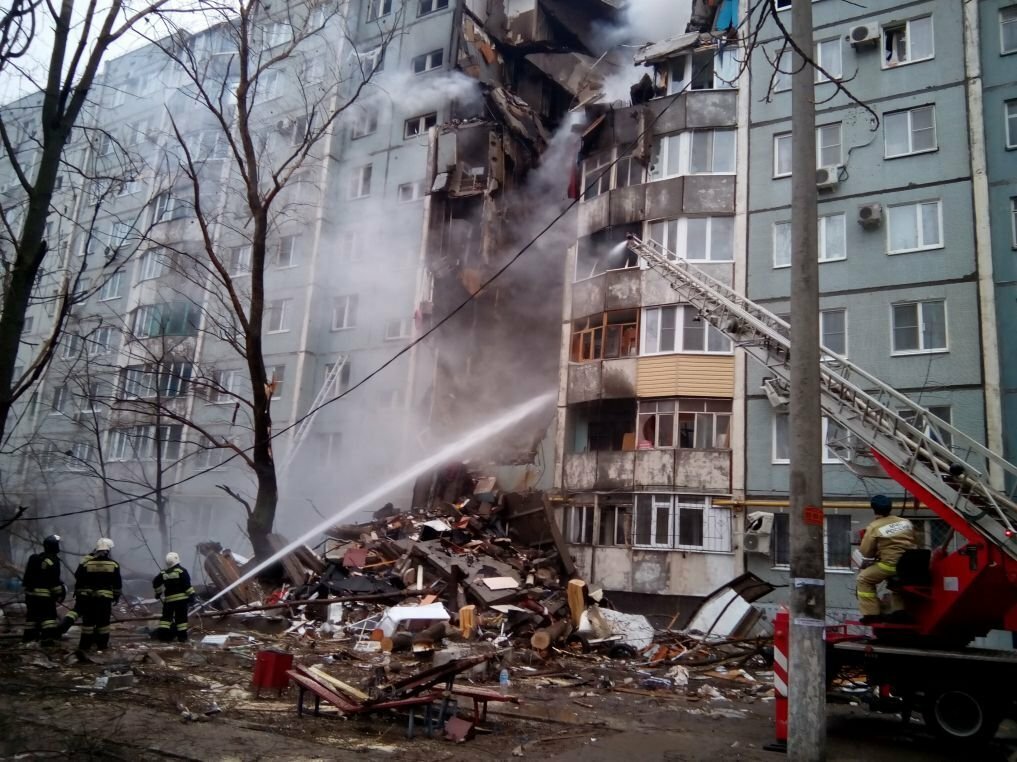
Even if the number of storeys is observed, the consequences of explosions in apartment buildings are disastrous. You can imagine what would happen if this happens in a high-rise building with a higher number of storeys in a settlement that does not have the equipment for fast high-altitude fire extinguishing
First of all, you should clarify which floor you live on. Previously, there were restrictions on gasification from 5 to 9 floors in various legislative acts. Now we can safely take SP 402.1325800.2018 for consideration and in it we see in paragraph 5.18 the requirements for apartment heat supply in residential buildings up to 28 meters high.
If you want to argue with this act, you can try, but in any case, you will need already coordination on safety standards with the Ministry of Emergency Situations and other departments, a positive result of which dubious.
The Technical Regulations for the Safety of Gas Equipment states that the supply of "blue fuel" is possible only if if fire safety is ensured, which includes the possibility of a quick technical response to ignition. And although this document has been canceled, the requirements in it are quite reasonable.
Indeed, the technical possibility of rapid fire extinguishing on floors above 10 is not possible in every city. Not even every roof is equipped with a helipad, not to mention the fact that gasification is unprofitable to provide in high-rise buildings under construction for various reasons.
But this is generally a separate conversation, the main thing we have found out is that the number of storeys in your house should not exceed 28 meters.
Premises for gas-using equipment
Now let's talk about the room itself and the requirements for it. This is necessary in order, again, to avoid unnecessary actions, because if your premises does not match, there is no point in registering gasification.

When installing gas appliances, you must be guided by the current regulations. You can't put them at random, even if it's very convenient for you.
You don't need to rummage through a pile of papers, just look in Design rules for gas supply systems SP 402.1325800.2018. These are the most recent gas supply design rules by the date of issue, which, although they are included in a list of voluntary use, but meet all the requirements of the Technical Safety Regulations buildings.
In order not to bother yourself, you will still have time to study SP 402.1325800.2018 in detail, we immediately look at part 5 "Requirements for premises ..." and find the section "Apartment buildings". In the first paragraph (paragraph 5.16), we see that the installation of gas stoves in kitchen niches is strictly prohibited.
Niche kitchen - by definition from SP 54.13330.2011 Is a room or part of it that does not have a dining area that is used for cooking. From the equipment in it - an electric stove and supply and exhaust ventilation. In a broader sense, a kitchen area communicates in one way or another with premises for other purposes.
Let's return to the rest of the requirements, they are the same as in single-family houses, so we look at paragraph 5.1 and see that, again, gas stoves should stand in kitchen rooms (at 5.16 it is they), with a height of 2.2 m, volumes of 8, 12, 15 cubic meters for 2, 3, 4-burner stoves respectively.
Should be provided ventilation hood, a window with a vent for ventilation and a gap at the bottom of the door from 0.02 cubic meters. meters of area. For boilers, the requirements are the same and do not forget that individual heat generators must have an area of 15 cubic meters or more.

Gas equipment must not be installed in residential premises, above or below them in any case, especially since this is contrary to current regulations
For reference, a heat generating room is a non-residential premises in which equipment with the supply of thermal energy and auxiliary devices are planned or already located. This applies to gas-using devices - stoves, columns, boilers.
Let's continue with the boilers. So, gas boiler in the apartment instead of the existing central heating, with a capacity of up to 50 kW, you can put in the kitchen, in a corridor passage, in a non-residential room (except for those that have high humidity - these are saunas, bathrooms, a bathroom).
If the power of the device in combination with others is higher, but does not exceed 100 kW, then a separate boiler room will be required. Please note that, again, there should not be any living quarters in apartments above or below.
Standards for distances and structures
We talked about the placement of the boiler room, the height from floor to ceiling, now we will discuss the room itself, where the apartment can be installed gas boiler, what distances to gas-using equipment should be observed and what should be still in the room constructions.
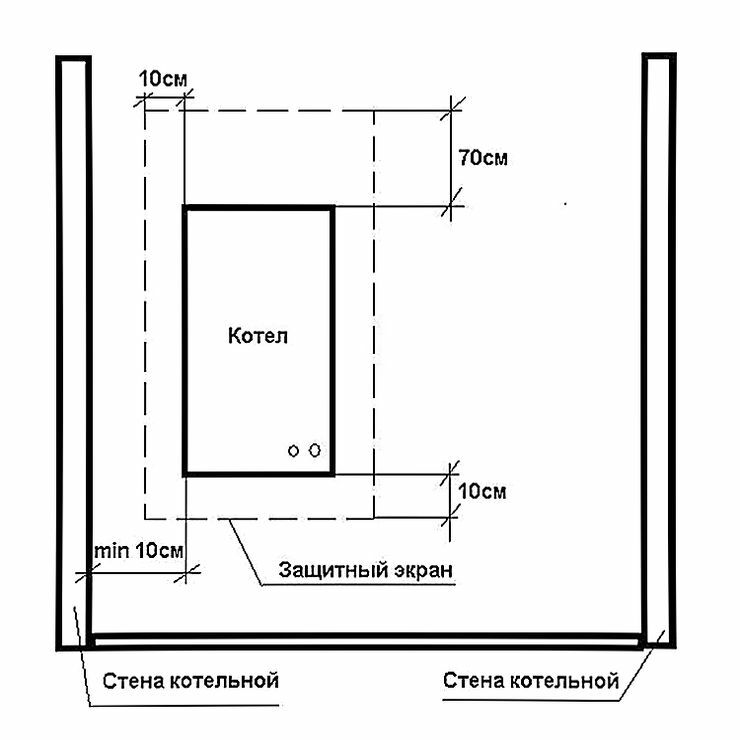
The required distances, surface requirements, and again, our SP 402.1325800.2018 requires manufacturers' recommendations to comply with
However, there are also mandatory rules. For example:
- Columns and boilers with wall mounting type must be installed on surfaces with fireproof material or fenced with special tempered glass and a distance from the walls of at least 3 cm.
- Wood floors or wood-finished floors are not permitted for gas-fired installations. equipment, if they are not covered with insulation up to 10 cm projection behind the equipment located fire-resistant material.
- The horizontal distance from the stove to the heating equipment is taken from 10 cm.
However, it will not be so difficult to equip heating devices according to these requirements. It is much more difficult to think over the hood and the window.
Exhaust ducts and window structures
To begin with, if you plan to place any equipment related to gas, ventilation should be of a natural type.
The hood is equipped with the calculation of three times the air exchange with the same inflow and additional air supplied to support the combustion. The air supply for the boiler is carried out by a separate channel.

The window opening, equipped with glass, must be easily resettable, meeting the requirements of GOST R 56288. Nothing else, no triplexes, reinforcement and so on can be installed in the boiler room if there are no other windows
As for the window, it should be an easily disposable structure. Volume - 0.03 sq. meters per 1 cubic meter. meter of the volume of the room. And the door leading from the room should open outward.
And, of course, do not forget about the installation of the IPU.
Separately, there are also mandatory recommendations for smoke ducts and ventilation, which you will find all in the same SP 402.1325800.2018.
Nuances of gasification of an apartment building
Process gasification of apartment buildings can be standalone or centralized.
In the first version, the fuel is taken from the common pipeline, and in the second, the fuel is supplied from special tanks that supply and store the gas resource, called gas holders.
Installation of gas tanks is unlikely in densely populated neighborhoods with apartment buildings, since the following conditions must be met during their implementation:
- Possibility of passing vehicles for tank maintenance.
- The distance from any residential property is at least 10 meters, from fences - at least 2 meters, from other buildings - from 5 meters.
- From reservoirs, wells and other wells - 15 meters.
With centralized gasification, all requirements have already been met.
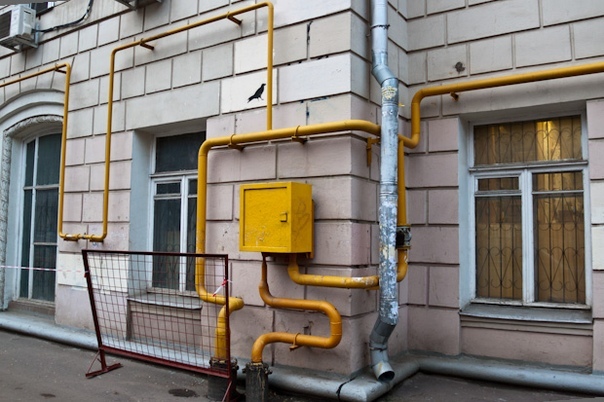
In addition, we note that the laying of the gas pipeline in any version is carried out along the facade above the windows of the 1st floor. At the same time, the input passes through kitchens or non-residential premises, and its interfloor transit also passes
Of course, there are many more nuances according to the peculiarities of the location of the house, its structural structure, and so on. This data will help you to clarify in local authorities.
Gas for new buildings
When arranging gas supply in a new building, whatever it may be, if gasification was not initially provided, it is necessary to hold a meeting of tenants who have the rights to living quarters in a particular home. At the meeting, a protocol is drawn up, displaying the number of those present, the topic of the meeting, the decision and the voting results.
If not everyone agrees, but at the same time "For" the majority of the tenants' votes, the decision is made in favor of the majority. Then you need to visit the administration, find out about the possibility of gasification, according to the planning scheme.
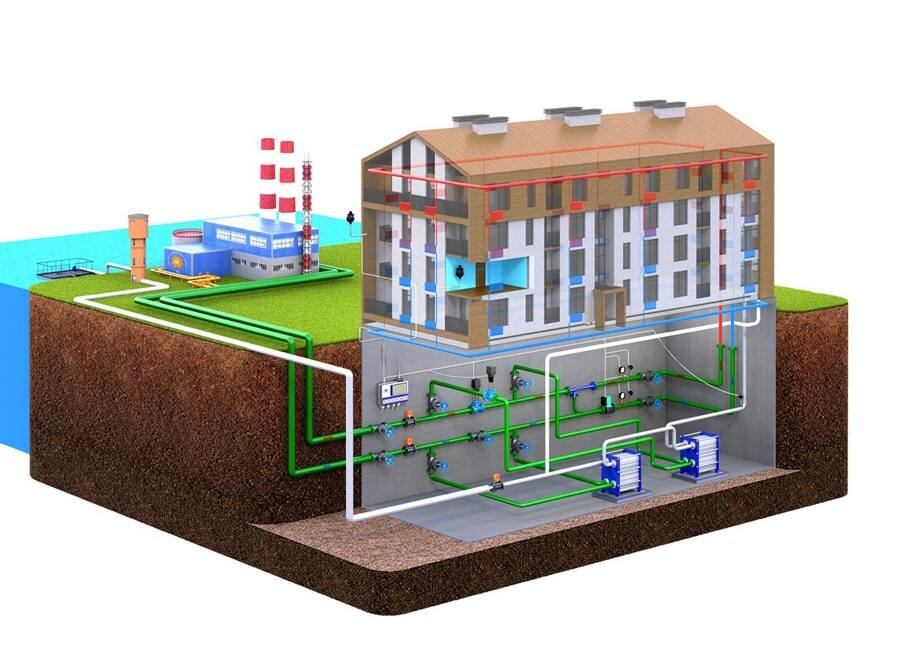
It is often unrealistic to design a gas supply system for an already built apartment building, therefore it is best to provide for such an opportunity at the construction stage, based on the results of a meeting of future residents of MKD
Further, the chairman of the meeting takes the protocol to the housing and communal services together with the application for connecting the gas. The question is transferred to the designer or a separate specialized organization.
A project is drawn up and then gasification of the house takes place if there is such a technical possibility. For autonomous gasification of individual apartments, the scheme is slightly different.
The procedure for registration of gasification of an apartment
First of all, it would not be superfluous to find out if it is generally possible to gasify residential objects in your apartment building or if there is no such technical possibility. This can be done at the local UK and GRO.

In the management company, if there is a design engineer, you can be advised on the possibility of gasification of an apartment in an apartment building. But also this point must be clarified in the GDO, according to the loads on the nearest line and the ability to connect to it
A preliminary conversation is needed in order not to waste time on collecting documentation and trips to the authorities, if it is still unrealistic to carry it out.
After receiving approval, you will need to gather the tenants and get a positive decision from them with the minutes of the meeting.
Let's look at the Housing Code of the Russian Federation. It has all the points regarding the nuances of the redevelopment of living quarters, starting with article 25. Gasification is a reorganization, as it refers to utilities, the change of which requires entry into the registration certificate of the dwelling.
The work is carried out, according to the law, at the expense of the owners of residential premises. That is, from gas input to in-house gas equipment, if your region does not provide for any preferential program, you pay in full for all communications and work. As well as design, construction and installation and commissioning activities, re-equipment of existing heating networks.
Next, you need to go to the local government and write an application for reorganization, as well as agree on the gasification of the apartment with the Criminal Code.
After that, you need to apply for a TU at the local gas distribution company serving the highways in your area. Do not forget to also obtain the consent of the owner of the gas pipeline.
On a contractual basis, an organization licensed for this type of work should be entrusted with checking the chimney and ventilation systems, as well as their arrangement or reconstruction.
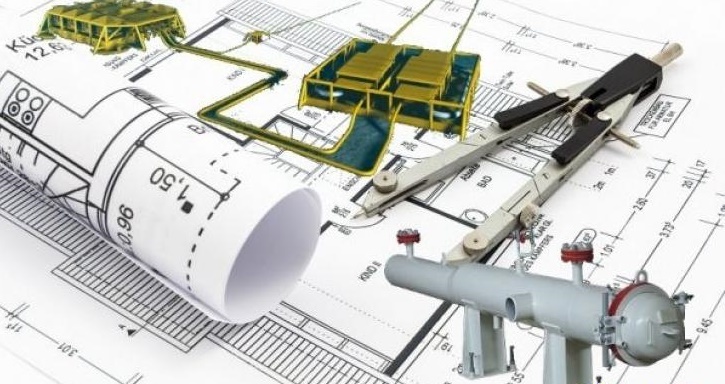
The gas supply project includes a communication scheme from the input to the house, the passage of pipes through the building structures, the place of installation of gas-using equipment
The development of the project and estimate work is being carried out, after which it is necessary to write a statement to the local heating network to disconnect from the general heating and hot water supply.
The purchase of equipment for gas use is a very important and crucial moment. You can't just take and buy the first stove or cauldron that matches the color of your handbag. The devices must comply with the requirements of SP and GOST.
After all this is ready, the specialists bring in the gas pipeline pipes and install in-house gas-using equipment according to the approved project.
The next step is to install metering devices, as well as signaling devices, according to SP 402.1325800.2018. When everything is established, a series of contracts for the maintenance of gas-using equipment and for the supply of gas is concluded between the gas supplying organization and the applicant.
There is an admission into operation and a test run of gas, as well as instructions on safety with the owner.
These are, perhaps, all the stages that need to be passed on the way to gasification of an apartment.
Prohibitions for owners of a gasified apartment
Having received autonomous heating at your disposal, you should not think that now you can use gas as you like. There are certain restrictions and prohibitions.
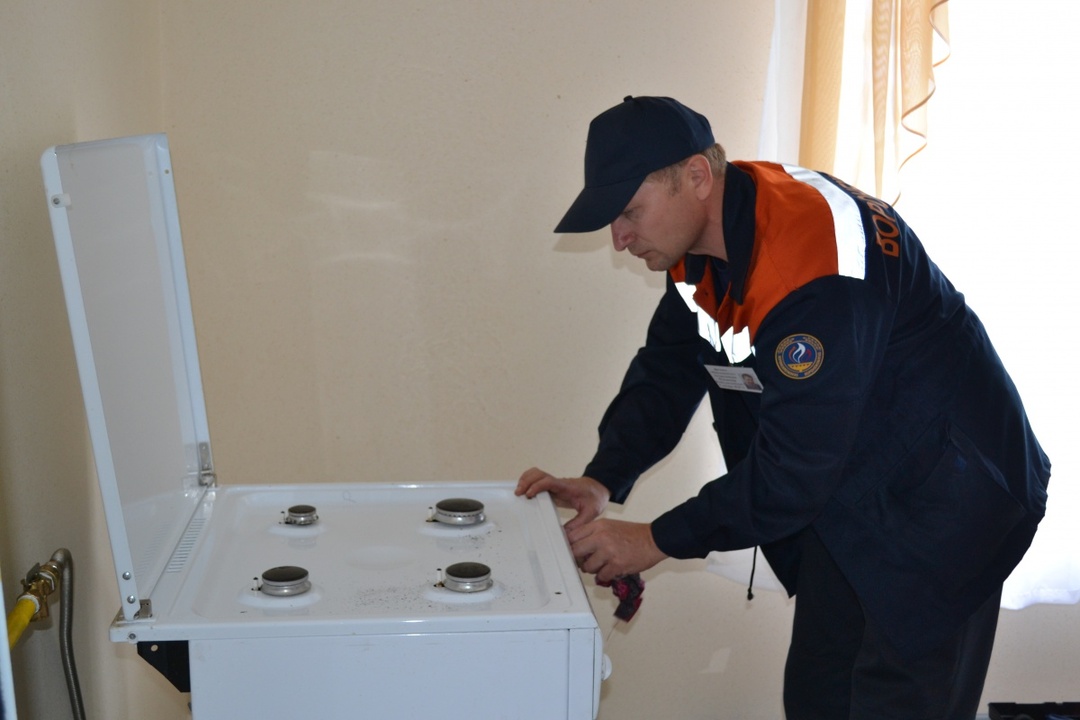
During the commissioning of gas appliances, as well as during maintenance, specialists carry out instructions on the rules for using the equipment and make comments to the owners if they notice minor violations
For example, unauthorized gasification is strictly prohibited. What does this include - the output of gas pipes to local gazebos, garages, sheds, basements, and so on. Connecting equipment not registered in the GDO, even if you just want to exchange one device for another. To do this, you need to invite specialists.
It is impossible to redevelop the premises to which the gas is supplied without prior approval. It so happens that after the devices are installed, people begin to remove temporary partitions.
Do not think that such a trick will be ignored. At the next service, your ingenious design may wrap up. SP and SNiPs regulating the installation of gas boilers in an apartment, no one cancels after the installation of devices.
It often happens that users turn off the automation and alarms if it is triggered by a malfunction of the equipment. Doing this is by no means recommended, remember that you are risking not only your property, but most importantly your life, but also other people, since you live in an apartment building.
Another reasonable requirement is that you cannot leave appliances that are not designed for long-term burning unattended during your absence. We are talking, of course, about gas stoves and included instantaneous water heaterseven if they are equipped with an automatic emergency shutdown. Still, we are talking about explosive and fire hazardous gas fuel.
It is not worth using gas for other purposes (household appliances). Yes, and it is forbidden to sleep in boiler rooms, after all, it's not for nothing that these rooms should be of a non-residential type.
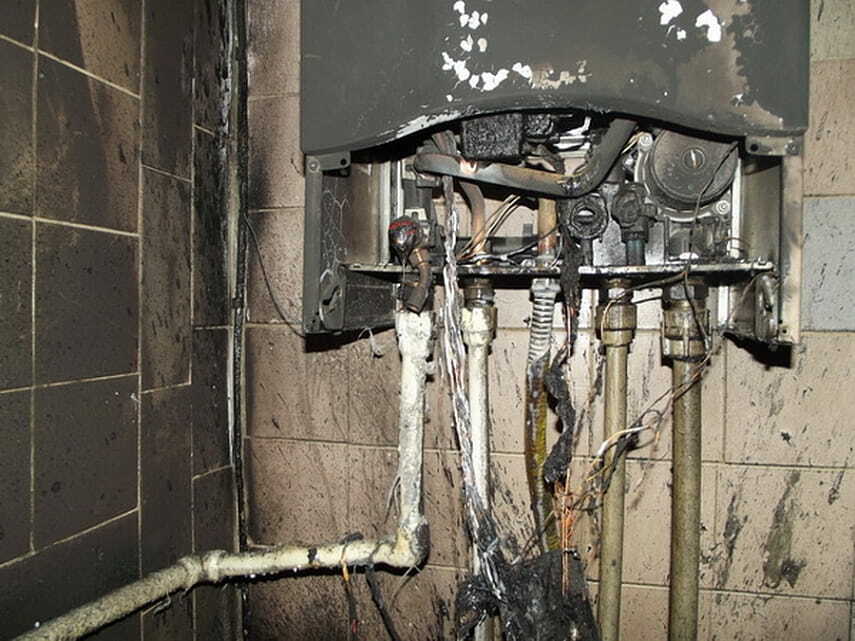
Violation of the rules for the operation of gas-using equipment leads to explosions and fires. Specialists, noticing problems in time, can also turn off the gas supply and terminate the contract with the owner of the apartment.
In general, each owner of a gas distribution company must be instructed on their rights and obligations before putting the gas pipeline into operation.
Obligations of the owner of a gasified apartment
If you have become a happy owner of autonomous heating of an apartment, remember that you have not only prohibitions, but also responsibilities. You are obliged to follow the rules for using gas at home.
Among them:
- the need to carefully study the instructions on the use of gas powered devices;
- carefully monitor the optimal functionality of all devices, chimneys and ventilation ducts;
- carefully monitor that the draft is at the proper level and periodically clean the flue duct;
- Immediately inform the GDO about all malfunctions arising with the controlled equipment, in particular about possible leaks outside the apartment on the gas supply;
- in case of a sudden disappearance of the gas supply, close all valves on the burners and supply pipes, call 04 to clarify the reasons;
- at any time of the day, allow employees of the gas distribution company to inspect the equipment upon a signal to their office about a possible emergency;
- admit specialists for maintenance and inspections;
- timely pay for the received resources according to the indications of the IPU;
- keep children away from working gas appliances.
Among other things, if you leave for more than a month, you must notify the gas service farms and leave them your valid phone number for communication in case of malfunctions on line.
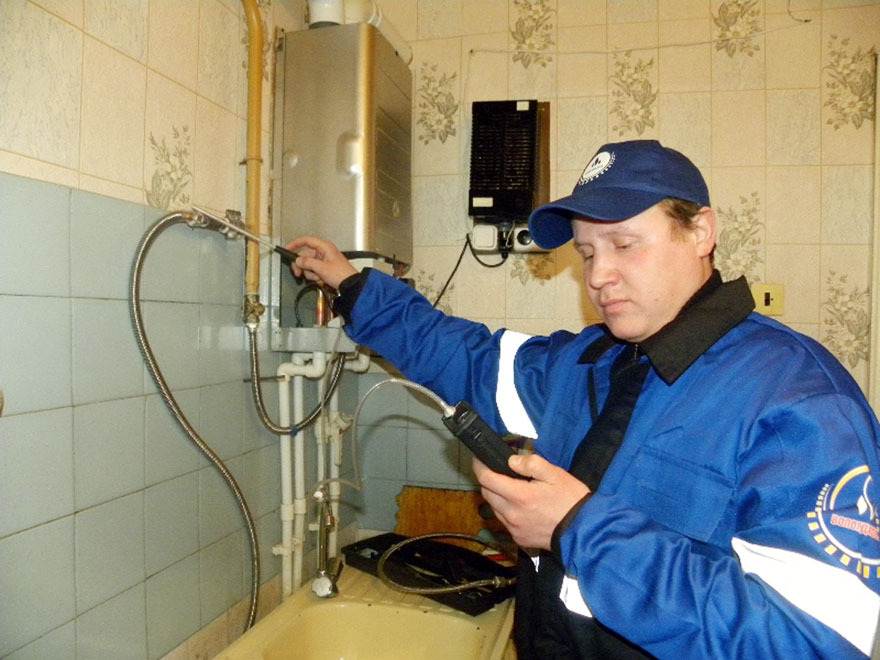
Even a small line leak in the long term can cause an explosion or fire. Therefore, when leaving, do not leave even closed durable equipment unattended for a long time.
These are not so complicated requirements, it will not be difficult to comply with them, and even ensure your safety.
Conclusions and useful video on the topic
What to do in case of a gas leak in an apartment:
Thus, the question - is it possible to put a gas boiler and related equipment in the apartment, you can answer positively. But for this you need to have suitable technical conditions, the necessary documentation, be patient and go through all these stages.
Many apartments in Russia have autonomous heating, therefore you have a chance to get this opportunity.
Have you gasified your apartment? Maybe you are planning or are categorically against such actions within the ICM? Write your opinion in the comments, and also ask questions that interest you.
